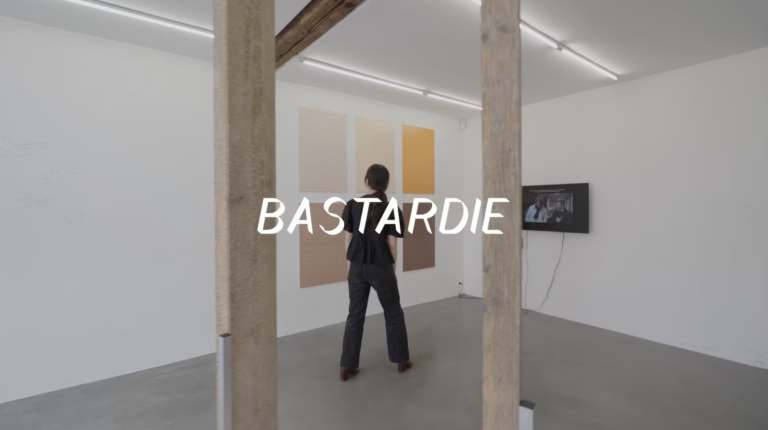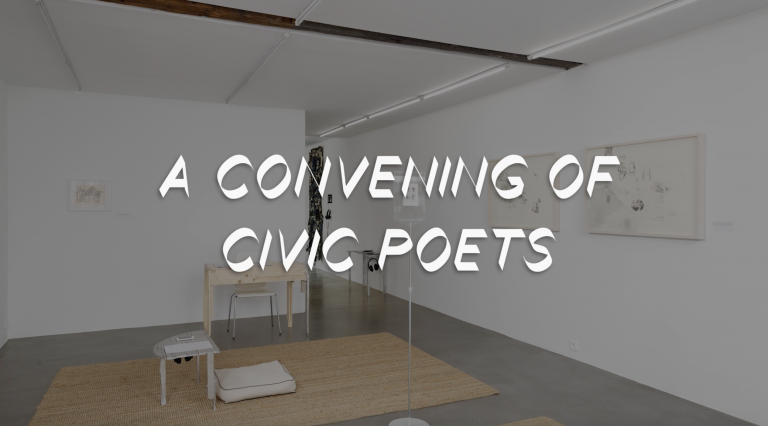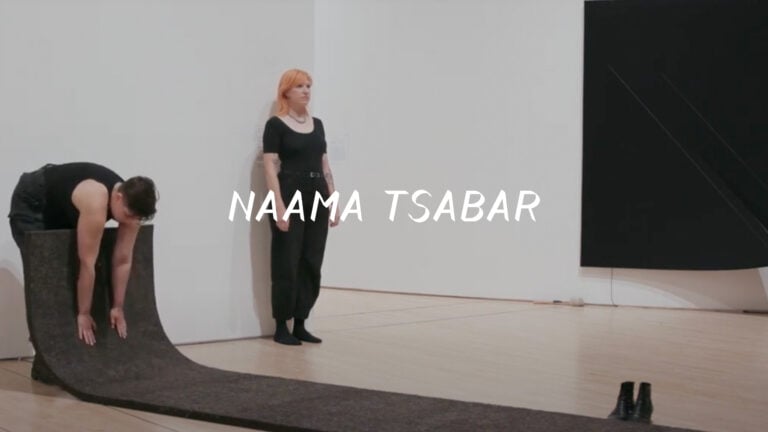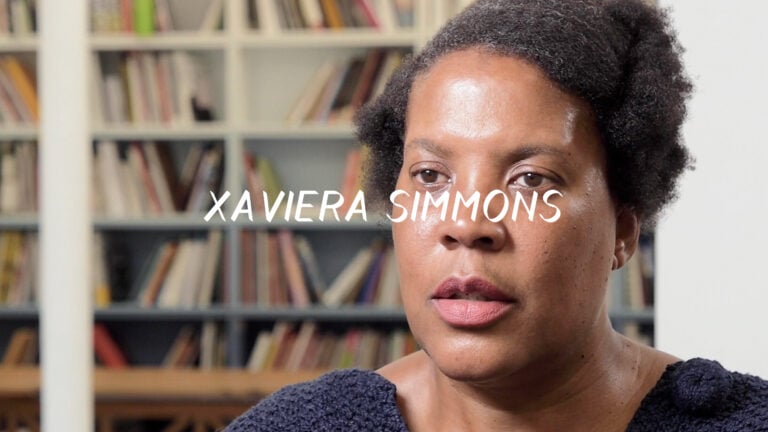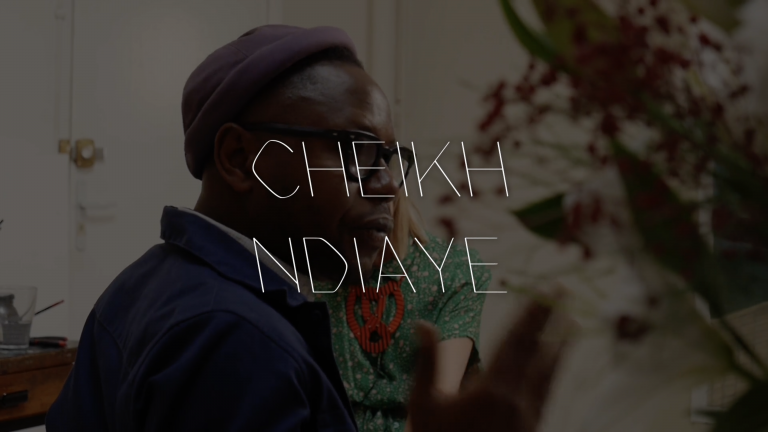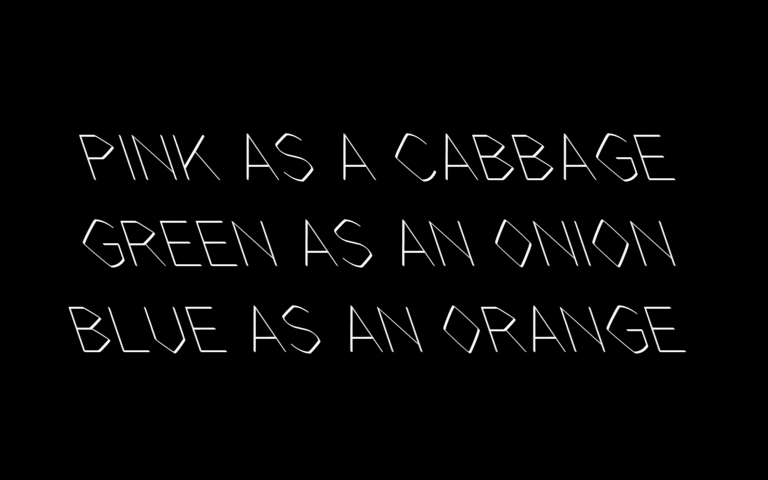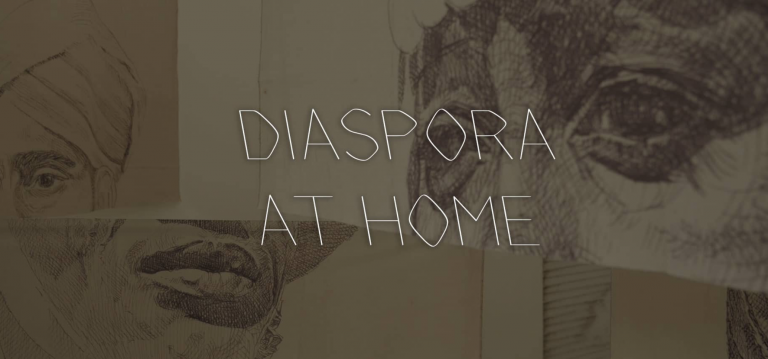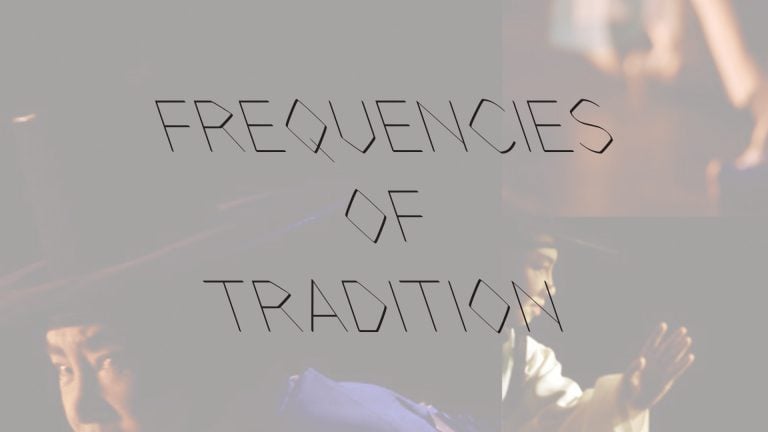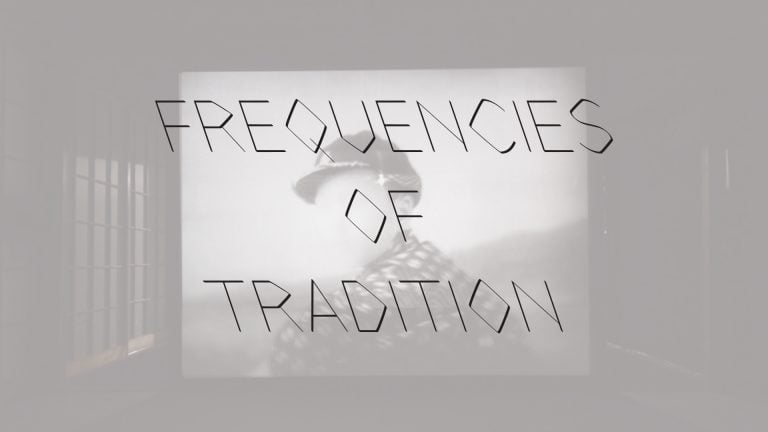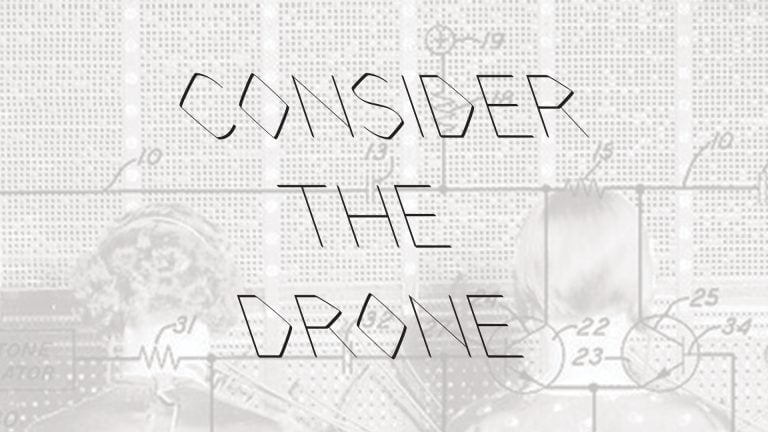KADIST.tv – Access Unlimited Streaming Video
Rainbow Body
Chitra Ganesh, 2018
2 min 7 sec
Rainbow Body
Chitra Ganesh, 2018
2 min 7 sec
The title of Rainbow Body by Chitra Ganesh refers to an elevated state of, or metaphor for, the consciousness transformation known as a rainbow body. The Buddhist master Padmasambhava achieved this state from his union with Mandarava, a female spirit (dakini) and princess in Tantric Buddhism. Through study and physical connection, each played a key role in the other’s enlightenment. Ganesh’s work takes inspiration from the cave on the right in the painting of the bodhisattva Maitreya, located adjacent to the animation. The cave structure is elaborated upon the extensively built out, introducing an interior depth where the ultimate transformation happens. The animation opens with Mandarava waking up to a dream in her bedroom and follows her journey through the Bardo, the sometimes terrifying passageway between death and rebirth. The aerial and gliding camera movements reconfigure imagery of the Bardo from paintings with a greater sense of space and depth. The work also combines the artist’s line drawings, watercolors, and paintings with pictorial elements from a variety of original sources.
Behold These Glorious Times!
Trevor Paglen, 2017
10 min 1 sec
Behold These Glorious Times!
Trevor Paglen, 2017
10 min 1 sec
Trevor Paglen’s ongoing research focuses on artificial intelligence and machine vision, i.e. how computers and other forms of technology can “see” and use visual data. Behold These Glorious Times! brings together hundreds of thousands of images and flashes them on the screen with dizzying, yet hypnotic, rapidity over the course of twelve minutes. As we learn, these photographic images are taken from training libraries used to teach artificial intelligence networks to recognize objects, faces, expressions, and actions in order to automate human emotions and expressions. Further, as the video progresses, the images begin to break down into more and more basic forms: black and white grids, subtle arrays of shading. In order to recognize images, AI is taught to break apart each picture, analyze its most basic parts, and then make sense of the whole. This alternatively numbing and captivating process is accompanied by an operatic soundtrack (composed by electronic musician Holly Herndon) which, itself, is a product of algorithms: the sounds are pulled from an auditory training library that will teach machines how to recognize human speech. As Paglen explains, when artificial intelligence is being taught how to see, it is fed batches of thousands of images that are sorted into various groupings known as “training sets.” This is what humans look like (note: African-Americans have been mistaken for gorillas); this is what doctors and nurses look like (note: computers readily conclude that doctors are always male and nurses always female based on the data they’re given); this is what a woman wearing a burqa looks like (note: apparently humans can get this wrong as well, so who knows). While there is already enormous bias in the images that we see around the world, we, as humans, have the capacity to critique our own views and try to expand our own “training sets” to challenge our visual stereotypes. While AI itself will not have the same capacity for self-reflection, the real question is whether its programmers and creators will make room for these debates. Power increasingly belongs to those who control this digital output Paglen calls “invisible images.” The basic challenges faced by AI vision will have wide-reaching consequences.
Resiliencia Tlacuache / Opossum Resilience
Naomi Rincón-Gallardo, 2019
16 min 2 sec
Resiliencia Tlacuache / Opossum Resilience
Naomi Rincón-Gallardo, 2019
16 min 2 sec
Resiliencia Tlacuache / Opossum Resilience by Naomi Ricón Gallardo is a fabulation in which four characters find themselves in temporalities that overlap Mesoamerican narratives about the creation of the world with the contemporary time of accumulation by dispossession. Together, they summon the powers of fire and joy so that the opossum conjures its ability to play dead and resuscitate in extractivist areas. The work reanimates Mesoamerican fables about time and territory where the four characters—Hill, Opossum, 9 Reed (Mixtec cave deity), and Agave/Mayahuel (Moon and Pulque Goddess)—create a space for conceptual intervention through performative action and popular music. Interpreting the realities caused by extractive projects, this video work creates an act of transmission to critically approach the deprivation of vital resources reflecting the processes of dispossession currently experienced by human and nonhuman communities in Oaxaca’s territory. The video reproduces the Mesoamerican cultural symbolism of the duality mountain/cave as ‘sacred space’ and proposes a critical theatricality wherein myths converge as epistemic resistance informing the geopolitical conflict created by the coloniality of power and capital, that is to say the structural condition of colonialism in Latin America. Seeking an alternative discourse, the artist connects the memory of landscapes with nahuales (shape-shifting sorcerers) in the myths of creation, where the guardian entities are responsible for limiting excessive accumulation. This work is dedicated to Rosalinda Dionisio, a Zapotec activist, community defender, and lawyer from the community of San José del Progreso, who has fought the environmental, social, and cultural effects caused by mining extraction projects in Oaxaca.
White Corner
Alexandre Arrechea, 1/1/2006 12:00:00 AM
8 min
White Corner
Alexandre Arrechea, 1/1/2006 12:00:00 AM
8 min
White Corner (2006) is a video installation, projected on two protruding perpendicular walls. On one level the work constitutes a self-portrait of the artist, whose image is projected on both walls, separated by the corner. Yet while facing, they don’t quite confront each other. The projection on the left hand presents Arrechea wielding a machete, while on the right he holds a baseball bat. Together, the artist appears to be unwittingly attacking himself, a poignant comment on blind fear and the failure to recognize the similarity in the “otherness.”
DROPSPIKE
Leticia Ramos, 2021
5 min 7 sec
DROPSPIKE
Leticia Ramos, 2021
5 min 7 sec
Leticia Ramos’s film DROPSPIKE is the second of a five-part film project entitled STORIES OF THE END OF THE WORLD . Each film in the series takes place in a different part of the world where climate change modifies the landscape. The short 16mm film was mostly shot during Ramos’s residency at La Bacque in Switzerland. The science fiction movie is set in 2044 when large glowing spheres inexplicably appear in different landscapes of the globe, one of them on the gelid coast of Pyramiden, a former Russian mining town on the Norwegian archipelago of Svalbard, in the High Arctic, and totally abandoned in 1998. Ramos visited the uncanny location in 2012, and it is not until Drop Spike that some of the images she captured there have found their place in her practice. In DROPSPIKE , as the shining orb breaks the monotony of the scenery, a robotic voice announces that the sphere is a sign that the ice has melted. Announcing the end of time, the voice claims: “If you see a large sphere, you are in danger”. A peculiar characteristic of the apocalyptic sphere is that it can only be perceived in person, by the naked eye, it cannot be documented through photography, film, or mapping technology. The film’s grainy texture and montage aesthetic creates a sense of dilated time. Celluloid film and emulsion are the artist’s primary materials, which allow her to manipulate the perception of time in the film. Its open-ended narrative generates an unsettling feeling that is difficult to classify, something between the melancholic realization of humanity’s imminent end and the renewal of a link with an occult being that cannot be rationalized.
Un hombre que camina (A Man Walking)
Enrique Ramirez, 2011-2014
21 min 35 sec
Un hombre que camina (A Man Walking)
Enrique Ramirez, 2011-2014
21 min 35 sec
In Un Hombre que Camina (A Man Walking) (2011-2014), the sense of rhythm and timing is overpowered by the colossal sense of timelessness of this peculiar place. Shot in Uyuni, Bolivia, the film depcits world’s largest salt flat, a site that sits in a mountainous region at over twelve thousand feet above sea level. Ramirez’s work is deeply invested in the loss of regional identity, and the anachronistic dress of his “modern-day shaman” in the film is meant to reconcile the historical and cultural gaps between tribal traditions of a specific time and place and the all-too-prevalent homogeneity brought on by advanced capitalism. His festive yet ominous ceremonial mask, by extension, functions as a relic of colonial resistance: made by native coal miners to ward off Spanish invaders, the mask signals a need both past and present to preserve rituals passed down through future generations and across cultural genealogies.
Smoke and Fire
Wang Tuo, 2018
31 min 17 sec
Smoke and Fire
Wang Tuo, 2018
31 min 17 sec
Smoke and Fire is the first chapter of The Northeast Tetralogy , a film project that Wang Tuo began in 2017. The project is a unique regional research of Northeastern China that addresses the region’s geopolitical contentions. Drawing on significant moments from China’s modern history, Wang’s visual storytelling sets up and displaces a series of socio-historical situations through multiple narrative structures. Wang’s tetralogy examines the fractures in the modernization of China’s Northeast region. He surfaces overlooked incidents of violence in Chinese society, and characteristic narratives drawn from the past century of the history of greater Northeast Asia, beginning with the May 4th Movement and continuing on to the Chinese Civil War, the Jeju Uprising, and the contemporary plight of migrant workers. The locality of the film series demonstrates an alternative perspective of the region through local culture, spirituality, and historical facts. In 2018, Wang began researching shamanic culture and rituals in Northeast China; this project explores how his idea of “pan-shamanism” can evoke personal and collective experiences through time and space. Wang’s neologism reorients and transforms the idea of shamanism; it does not subscribe to its ancient religious, healing, or divination meanings. Instead, pan-shamanism is a catalyst for a collective belief or power, and for the possibilities of connecting and perceiving diverse experiences, histories, and time. This project is a critical endeavor in exploring the histories, deconstructing the past, and imagining the near future of China’s Northeast. Smoke and Fire tells the story of a migrant worker who moves through multiple, semi-fantasy worlds. In the first world, the worker is in a warehouse of movie props, where he reads aloud texts that project him into miraculous tales and deeper into his imagination. In another world, the migrant worker journeys back home, experiencing daily life in a small town in Northeast China. In a third narrative, the protagonist enacts the real-life story of Zhang Koukou, who killed three neighbors in 2018 as revenge for his mother’s death twenty-two years prior. In addition to these narratives, the artist interweaves an evocative story from Ming dynasty writer Feng Menglong’s vernacular fiction Stories Old and New , which is about the friendship between two scholars, in which one becomes a ghost to realize his commitment. Without explicitly stating the parallelism, this historical reference suggests how trauma can result in alienation. As such, the first chapter of Wang’s tetralogy reveals the connection between individual trauma and the powerlessness of existing in an unjust reality. With a focus on the migrant laborer’s social identity and internal struggles, Wang’s film evokes a shamanic power that transcends the realistic violent and dramatic scenes, offering profound insights into desperation and tragedy in Chinese society.
9000 PIECES
Euan Macdonald, 2010
5 min 36 sec
9000 PIECES
Euan Macdonald, 2010
5 min 36 sec
The video 9000 PIECES by Euan Macdonald was filmed at a musical instrument factory in Shanghai where 90 percent of the pianos that they manufacture are exported around the world, and only 10 percent are “finished” and can be labeled “Made in the US (or) Europe.” The video captures an intricate network of mechanisms as they interact with each other, their rhythmic movements resulting in an intense choreography and a cacophony of metallic sounds dramatized by Macdonald’s editing. As the shot widens it reveals the process we see unfold: a piano being vigorously tested by a factory machine designed to determine the endurance of the instruments. Contrary to what is often relayed, the work has nothing to do with Chinese factories or fast changing global economies. As described by Macdonald “it’s about the way information is perceived and put together through the connection of looking at different parts of something, and then accumulating them into a larger image.” Perception and temporality are tempered with as the artist directs our focus from the micro to the macro, from the parts to their sum.
An Aleatory History of the Stick
Michael Linares, 2014
53 min 38 sec
An Aleatory History of the Stick
Michael Linares, 2014
53 min 38 sec
After two years of research in close conversation with anthropologists and archaeologists, Linares eventually enrolled in classes to study archeology—specifically the history of material artifacts. He became obsessed with the origin of metaphor, and the stick as the Ur (earliest) object used by humans that led to the formation of meaning itself. This video, which accompanies the “Museum of the Stick,” is part of major work surveying material culture collected and presented by the artist through a complex narrative of associations and anthropological research. Here “aleatory” means not just random but subject to the complex and organic forces of chance. “As early as the Pliocene epoch, the stick as a specific, three-dimensional form has played a vital role in the technological, social, political, aesthetic, and religious development of humanity and some animal species. The chimpanzee’s tool that catches termites, the facial ornamentation of the Yanomami people, the Shulgi of Ur’s weaponry—as well as the toothpick, knitting needle, and vaulting-pole—all represent a minute slice of the myriad transfigurations that this form has undergone throughout history.”
Sickhands
Petra Cortright, 2011
23 sec
Sickhands
Petra Cortright, 2011
23 sec
In her 2011 webcam video, Sickhands , Cortright poses before her in-computer camera, as her hands, hair, and body begin waving and rippling vertically across the screen, distorted by software effects. Capitalizing and commenting on the ubiquity of homemade video, the short film replicates with banal proximity the amateur special effects that thrive on the web. This rather cliched visual trick recalls a funhouse mirror, or, perhaps more aligned with Cortright’s frame of reference, a dream-sequence cue from after-school 90s television. As with several of her other webcam works, Sickhands is characterised by its playful and honest approach to self-portraiture in a ‘post-internet’ context.
Void
Joshua Serafin, 2022
10 min 34 sec
Void
Joshua Serafin, 2022
10 min 34 sec
Through the language of dance and choreography, Void by Joshua Serafin narrates the creation of a new God, the birth of a futuristic deity. Serafin’s research into the making of this dance video is centered around creation myth stories of pre-colonial animistic religions from the Philippines, which were suppressed by the Spanish imposition of Catholicism. Through movement, the materiality of his bodily presence on the screen, and the accompanying sci-fi soundtrack, this work proposes the foundation of a queer mythology; the nascent moment of a ‘queer spiritual force’ coming out of an apocalyptic era, perhaps our current one, that has arrived to refund a new kind of humanity. Void, this speculative new God, appears on earth to live in the mortal world to better understand what it means to be a god of a new time. In the words of the artist, the impetus for creating this work is to decolonize the self and to question heteronormative ideologies that were implemented in the Philippines and across the world by the west through religion. It takes as a starting point the Filipino pre-colonial identity which is fluid and doesn’t conform to binary representation, as is the case in many other pre-colonial societies. The main inspiration of this work is referencing spiritual backgrounds in Philippine society, and pre-colonial gender belief systems passed down through generational oral knowledge.
Dawn Surf Jellybowl
Jennifer West, 2011
8 min 15 sec
Dawn Surf Jellybowl
Jennifer West, 2011
8 min 15 sec
This work was filmed on the shores of Jelly Bowl beach in Carpinteria, California, after Jennifer West was taken by the sight of a coastal family home owned by surfer Andy Perry. After conversing with Perry, spending time in the site, and engaging with several other locals, West wanted to produce a film that documented this idyllic Californian lifestyle and that embodied the sense of joy, warmth and nostalgia that multiple generations of surfers and their families had shared in this site. In the footage we see a couple of silhouettes wrapped up in blankets as they watch their beloved ones surfing at dawn—including surfers Andy Perry, and siblings Makela, Alana and Zach Moore. Pure and enjoyable, the film is about the community that enlivens these shores on a daily basis. Dawn Surf Jellybowl approaches the question of what film can and cannot seek to capture—and takes it to a literal extreme. Seeking to imprint the daily, material matter of California surf culture directly onto the surface of the celluloid, West swam in the water with 400 feet of film, letting it brush past seaweed and crash into the sand. She then took it to the surfboard shaping workshop where she hand sanded it then squirted, dripped, splashed, sprayed and rubbed with donuts, zinc oxide, tequila, sunscreen, hydrogen peroxide, beer, sand, tar, and even scraped it with a shark’s tooth.
Há Terra!
Ana Vaz, 2016
12 min 37 sec
Há Terra!
Ana Vaz, 2016
12 min 37 sec
Há Terra! (There Is Land!) is a short film by Ana Vaz that picks up on the artist’s previous film A Idade da Pedra (2013), in which Vaz imagined premodernity in her native Brazil. Há Terra! revisits the young protagonist Ivonete dos Santos Moraes, who has joined Brazil’s landless movement that struggles to wrestle land from powerful agriculturalists. The story is set in Brazil’s “sertão” (backcountry), where the cry “há terra!” (literally: “there is land”) can also be interpreted as an assertion that there is no reason for the landless, whose organized movement is now some forty years old, to be deprived of land. The protagonist Ivonete hails from the region of Quilombos, a settlement of runaway slaves that resisted colonizers. In the film, darting camera movements appear to chase Ivonete through the high grass, the young girl comes to personify a territory. The present-tense narration fuses with the past in the myopia of the long focus lens. The recurrent sound loop of a man shouting “Land! Land!” conjures up the distant memory of colonialism. But the beauty of Vaz’s collage of images and sounds hinges on the impossibility for the viewer to let the past pass. Shot on expired 16mm film, the artist describes her cine-poem: “ Há Terra! is an encounter, a hunt, a diachronic tale of looking and becoming. As in a game, as in a chase, the film errs between character and land, land and character, predator and prey.”
Half Blue
Joe Namy, 2019
11 min 18 sec
Half Blue
Joe Namy, 2019
11 min 18 sec
Joe Namy’s Half Blue is an installation consisting of a video, a sound, and a sculpture, that triangulates a personal experience of the artist’s cousin Khalid Jabara, who was murdered by hate crime in Tulsa, Oklahoma, U. S. A in 2016. An event that garnered international attention, Jabara’s murder led to the Jabara-Heyer NO HATE Act passed by US Congress in 2021. The act was named after Jabara and Heather Heyer, two hate crime victims whose murders were prosecuted as hate crimes but not reported in hate crime statistics. According to the Human Rights Campaign, the intention of the act is “to promote better hate crimes data collection as well as a more informed approach to hate crime prevention at the federal, state, and local levels”. Placed on the floor of the installation, Namy’s work features a 47-inch flashing light bar, half blue and half red, like the ones atop police cars. The alternating blue and red light seeps and pulsates, as the light bar evokes a familiar scene in many neighborhoods; one of systemic structural failure of the carceral state. Next to the light bar is a video projection accompanied by an original sound composition. The composition is interpolated with news reports and songs in what Namy calls a “playlist of getting over”. Redolent of R&B and hip-hop tracks, the playlist includes a vocal improvisation by Alya Al Sultani, as well as Arab American musician Halim El Dabh’s voice composition ADEMAELARD . In the sound composition a multitude of voices coalesce into a polyphonic elegy: the daily political othering of Arab Americans in media soundbites; the voice of Eric Garner’s daughter Emerald Snipes; excerpts from artist Etel Adnan’s book of poems Arab Apocalypse and poet Marwa Helal’s Census. Notably, Namy’s own voice relays an account of the two images that the artist took of Jabara (while testing out a new camera lens over Christmas break), that were later widely circulated in news reports of Jabara’s death. Flashing in red and blue text are facts, including the “oppression of omission” in the 2010 US Census checkbox for 3.5 million Arab Americans, and what might encapsulate this work: A SWELLING, A SWARMING, A BREATH, A LAMENT . The exhibition of this work also included communal listening and discussion. Namy is currently a Sundance Kendada / TIME Magazine fellow to develop the work into a short film.
Aquaphobia
Jakob Kudsk Steensen, 2018
14 min 16 sec
Aquaphobia
Jakob Kudsk Steensen, 2018
14 min 16 sec
The virtual reality work Aquaphobia by Jakob Kudsk Steensen examines it’s title subject matter – the fear of water. Inspired by psychology studies used to treat aquaphobia, the work employs VR technology to merge imagery of past and future geological landscapes, as well as external ecosystems with internal psychoscapes. Steensen mobilizes the visual exploration of the fear of water to transform viewer’s perceptions on water-related climate change, such as rising water levels. While traveling through mud, water, plants, and subterranean infrastructure, the viewer is guided through the five stages of a break-up narrative by a water microbe. Throughout the journey, an aquatic alien recites a poem about a break-up between the landscape and the viewer. The five parts reference a common five-step treatment that patients with aquaphobia undergo. To create this virtual landscape, the artist used satellite imagery, as well as soil and rock types that Steensen photographed.
Vitrina
María Teresa Hincapié, 1989
38 min 34 sec
Vitrina
María Teresa Hincapié, 1989
38 min 34 sec
In the performance video Vitrina , María Teresa Hincapié stood inside a storefront window in downtown Bogota, unannounced, for eight hours a day, wearing a uniform and initially carrying out cleaning chores. As the day and passers went by, the routine became more playful: she would send kisses to bus drivers on the busy Avenida Jiménez who would return them, use the newspaper with which she was shining the glass to flirtatiously hide and engage with an improvised audience or draw the shape of her body with soap and a sponge. She would interrupt these chores to carry out other ‘feminine’ activities, like brushing her hair or applying make-up, only to return to frantically cleaning the transparent surface that separated her from the public. At times, her actions became more political, writing phrases in red lipstick on the now spotless glass that alluded to the nature of her being a working class woman in a violent, male-dominated society. Vitrina is a work that marks Hicapie’s transition from theatre to performance and addresses the very nature of a performing woman at the time: the expected activities of such a woman, the tension between the public and the private, the placement of her body behind a glass either as a servant or as an object to be consumed. Vitrina is one of the few works that were produced and made available by Hincapié during her lifetime and is a document of the emergence of performance art in the country.
Beach Study
Sriwhana Spong, 2012
7 min 31 sec
Beach Study
Sriwhana Spong, 2012
7 min 31 sec
Inspired by the 1934 novella Duo by the French writer Colette, Sriwhana Spong’s film Beach Study explores ideas of disappearance and the ephemeral, both physically and psychologically. In the film, a female body conducts abstract dance movements on a beach, responding to the environment that surrounds her. This particular beach was one the artist loved as a child, but today it is hardly accessible because it is in the hands of a private landowner. Shot on 16-millimeter film through colored filters, the film has intense flashes of magenta, violet, and amber, and other flickering “light leak” effects. The female body appears and disappears intermittently, creating a surreal and mysterious presence. The overall effect suggests a precarious relationship between memory and experience, transience and monumentality.
Coyolxauhqui
Colectivo Los Ingrávidos, 2017
9 min 46 sec
Coyolxauhqui
Colectivo Los Ingrávidos, 2017
9 min 46 sec
The word Coyolxauhqui refers to femicide or the killing of women in rural Mexico on the basis of gender. The mutilation of the Aztec moon goddess Coyolxauhqui by her brother Huitzilopochtli, the sun god and human sacrificer, is reimagined in this film. Coyolxauhqui by Colectivo Los Ingrávidos is the first in a trilogy of films that positions itself as a form of political resistance, delving into the relationship between current Mexican femicide and broader cultural traditions. The film takes place in the abandoned La Mixteca region, home to several textile maquilas–manufacturing assembly plants that export duty-free components. Here, Coyolxauhqui’s original femicide links with the wave of the brutal femicides which began among young women working in the maquilas in Ciudad Juárez. The camera meanders to the frantic rhythm of an improvised percussion ensemble, recording blurred sneakers and clothing strewn across the brush, images of fruits and vistas. It is a visual poem about the cyclical nature of myths, rituals, violence, and death. Coyolxauhqui is one of three films created in 2017 by Colectivo Los Ingrávidos that address gendered violence against women in Mexico. All three are shot on expired film stock, which results in washed-out colors and the distinctive pinkish tone of color fading. Working with obsolete stock speaks directly to the scarcity of filmmaking in Mexico. At the same time, it also reflects on the Mexican political landscape and the precariousness of the working class’s living conditions. The permanent sense of danger, risk, and contradiction that emerge from the government’s neoliberal politics are conveyed in Los Ingrávidos’s medium and working processes.
Intersticio (Interstice)
Elena Damiani, 2012
5 min 25 sec
Intersticio (Interstice)
Elena Damiani, 2012
5 min 25 sec
Intersticio (Interstice) by Elena Damiani traces the topography of a non-specific site, an in-between zone. The video presents a panoramic view of two territories of a shifting and unresolved character, composed out of segmented events that visually intersect at a shared horizon point. Over the images, a fragmented and ambiguous poetic narration describes, by means of images found in digital archives, a hybrid site that permutes the representation of nature through its fusion of source material. The sense of permanent wandering designates an excursion with no precise destination, a mental place of fractured limits with an amplitude larger than any physical location. This trajectory appears to be dictated by the circumstances of an open field, where concrete places are now only points along a route, and the in-between moments that mark a continuous state of transition are the ultimate destination. With Intersticio , Damiani presents a journey to a territory comparable to contemporary space—a world so ample that the spatial and temporal coordinates essential to historicity fade, throwing our impressions of reality into question.
Stong Sory Vegetables
Laure Prouvost, 2010
3 min 20 sec
Stong Sory Vegetables
Laure Prouvost, 2010
3 min 20 sec
In Stong Sory Vegetables , Laure Prouvost explains that she woke up one morning and that some vegetables had fallen from the sky on her bed, making a hole in her ceiling. Each video, in this series, is an odd still life representation turning everyday elements into imaginary and funny stories. A tomato, an onion, a lemon and a carrot are displayed in front of the monitor as relics. These vegetables are also present, outside the monitor, to assure the spectators as well that the stories we are hearing are true. The artist invites us to participate in her stories, and to sort out the inextricable connections between language, image and perception. In many of her videos, Laure Prouvost uses as a starting point her own family life, her acquaintances or even her pets. Her daily stories drift quickly towards odd and funny connections. Thus, in the video Stong Sory , the artist prepares a beautiful cake for her brother’s birthday, which contains living surprises such as spiders and birds. The piece of bread on the stand is a relic, which brings us to see beyond its mere appearance. In the same way, if Laure Prouvost uses her family as “raw material” it is not only to create a contrast with her surreal stories but also to speak about the complexity of daily life as a constant invitation into her works: “Behind! Look Behind!”.
Retiro
Natalia Lassalle-Morillo, 2019
40 min 30 sec
Retiro
Natalia Lassalle-Morillo, 2019
40 min 30 sec
In her film Retiro (2019), Natalia Lassalle-Morillo considers how women pass down memories to their kin as they age. A film within a film, the three-channel portrait combines the scripted film she and her mother made together, behind-the-scenes shots of that film’s production, and interviews with her mother on gendered familial expectations and aging in Puerto Rico. Lassalle-Morillo’s meta approach to story-telling unpacks her relationship to her mother, demonstrating how maternal trauma, history, and myth are made and inherited through disjointed narratives. As a result, the film “reorganizes” ancestral trauma, giving the artist freedom to reject or move on from her inheritance, if she chooses to. The artist’s mother, Gloria—an actor, director, and screenwriter on the project—worries that history will repeat itself, as her stories, skills, and physical likeness endure through her daughter. She recounts finding refuge in her parents’ home after divorcing a man her parents never approved of, which coincided with the United States’s mid-20th-century industrialization of Puerto Rico, which changed the landscape and trajectories of many Puerto Ricans. Gloria also attempts to revive a garden that she has lost: not because it has disappeared, but in that it has become unrecognizable while within her grasp. When children are no longer recognizable from the tiny people they once were, are they gone forever? Retiro suggests that perhaps repetition can free children from their lineage, creating new beginnings, new myths, and new histories.
Alka domo
Seba Calfuqueo, 2017
17 min 56 sec
Alka domo
Seba Calfuqueo, 2017
17 min 56 sec
Alka domo by Seba Calfuqueo is a performative video work that recontextualizes a story about Caupolicán, the Mapuche toki (meaning symbol of strength and perseverance in the face of adversity). Caupolicán was elected military leader by the Mapuche people of Chile after successfully completing the challenge of holding a log on his shoulders for two days. Caupolicán led the Mapuche army in the first uprising against the Spanish conquistadors from 1553 to 1558. In Alka domo the artist holds a tree trunk that he hollowed out by hand above his head in various public sites. The particular type of tree used in this endurance performance is called coihuea; it is a significant type of ancestral wood from Southern Chile. Hueco (‘hollow’ in English) is the derogatory term that Chilean people use to refer to queer people— identities that are problematic to the patriarchal systems in Chile. Refiguring references of Caupolicán’s masculinity, the artist wore seven different colored pairs of high heels throughout the action, each pair representing a color of the LGBTQ flag. Meditating on historical, cultural, and biographical legacies, the locations for the performance represent places where the complexity of interaction between Mapuche and Chilean culture and territory is evinced, alongside areas associated with the artist’s own biography.
Limbé
Mathieu Abonnenc, 2021
9 min 55 sec
Limbé
Mathieu Abonnenc, 2021
9 min 55 sec
The film Limbé by Mathieu Kleyebe Abonnenc takes its inspiration and its title from a poem by the Guyanese poet Léon-Gontran Damas, one of the co-creator of the negritude movement. This Creole expression, which activates the Limbo dance through language, evokes a great sadness, linked to the death of the artist’s sister. This silent film continues Abonnenc’s collaboration with dancer and choreographer Betty Tchomanga, who played the protagonist in his film Secteur IXB (2015). In Limbé Abonnenc attempts to give form to a state of deep melancholy, while echoing the reflections of Guyanese poet Wilson Harris, for whom the Limbo dance is a way of evoking, through its contortions, the gestures that slaves had to invent to survive crossing the Atlantic ocean in the hull of slave ships. It is said that the Limbo was born on slave ships during the Middle Passage; there was so little space that the slaves contorted themselves into human spiders. In the film, the black body appears and reappears progressively in the darkness, obliging the spectator to adjust their sight in order to apprehend what is happening before their eyes.
Heat Waves
Kent Chan, 2021
21 min 20 sec
Heat Waves
Kent Chan, 2021
21 min 20 sec
Heat Waves by Kent Chan examines the contexts, politics, and proliferation of the different aesthetics of heat by drawing from the aesthetics of regions defined by hot and humid climates and associated with histories of coloniality such as ‘the global south’ and the ‘developing world’. The video takes the form of a curated broadcast or music video of historical and contemporary imagery and videos of both found and filmed footage, including media broadcasts; TikToks; DJ sets; an interview with Keanu Reeves; an excerpt of Ho Tzu Nyen’s 4 x 4 – Episodes of Singapore Art (2005); an interview with KADIST Collection artist Julian Abraham Togar; and DJ sets. The barrage of footage weaves together contrasting tropes about the tropics: depicting it as a diseased paradise; naturally abundant, yet economically poor; filled with people who are at once energetic and lazy; with dynamic aesthetics, but lacking order. Arranging snippets of popular culture into a narrative of contradictions, Chan deconstructs the collective imagination of the notion of the ‘tropics’.
KADIST TV FAQ
-
What is KADIST.tv?
Founded in 2022, KADIST.tv is a video portal that helps visitors find, search and navigate the various videos available on the KADIST.org website. It also provides access to hundreds of limited edition video artworks in the KADIST Collection, as well as dozens of licensed videos by artists already represented in the collection.
As an organization, KADIST is committed to improving resources available to curators, scholars, and art enthusiasts. By providing greater access to artworks in the collection, and interviews with artists we hope to act as a public resource while also encouraging more exhibition and screening opportunities for KADIST artists worldwide.
-
What are KADIST "Double Takes"?
KADIST’s ongoing “Double Takes” program of collaborations with art centers celebrates the increasingly important place of film and video in contemporary art. This international program puts moving-image from the collection in dialogue with local contributions from a partner institution, presented as public screenings and exhibitions, and shared on KADIST.tv.
-
How can I access the full-length videos?
You can set-up a free account here. Once you’re logged in, you can stream full-length videos for preview and research purposes only.
-
What does the little "star" icon do? Can other people see my Favorites?
Once logged in, you’ll be able to “favorite” a video by clicking the star below each thumbnail, allowing you to save the video to your personal channel. This channel is not visible to the public, only to you.
-
What are "Channels"?
KADIST.tv presents a series of ‘playlists’ that we call channels, that feature a selection of videos on a related subject. Channels may include non-KADIST videos (found on YouTube or Vimeo) and often relate to the recent programs and international collaborations of KADIST.
-
Who should I email if I find a bug?
Please send an email to online@kadist.org. Please note which browser you’re using, and any relevant links to videos, channels.
-
How can I share a video I like?
You can easily share any video from KADIST.tv by copying and pasting the URL on social media or other platforms.
-
Can I download videos from KADIST.tv?
All videos on KADIST.tv are part of the KADIST collection, licensed, or produced within KADIST programs. As such, they are protected by copyright and reproduction rights and may not be copied, reproduced, or distributed without authorization.
Member Login
KADIST Video Artworks
Explore hundreds of compelling videos from our collection, tackling key issues that shape the world today.
EnterKADIST Interviews
Discover two decades of artist and curator interviews produced by KADIST, offering global perspectives on contemporary art.
Enter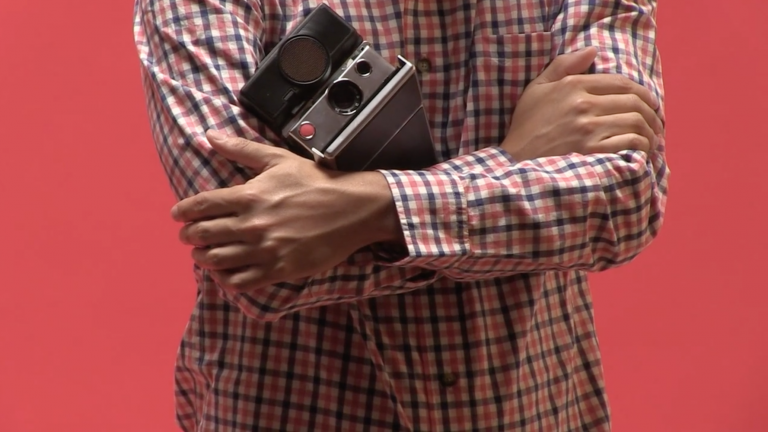
Tim Lee
- favorite

Five-Hundred Twenty-Four
Lenka Clayton and Phillip Andrew Lewis, 2022
- 30:18
- 2022
- favorite

Screening of Melvin Moti’s film “The Prisoner’s cinema”, 2008.
- favorite

At that time when everything was human
Aline Baiana, 2016
- 2016
- favorite

NEPALI POWER: The Way To Become Electricity Exporter?
Köken Ergun and Satyam Mishra, 2022
- 16:33
- 2022
- favorite

Vitrina
María Teresa Hincapié, 1989
- 38:34
- 1989
- favorite
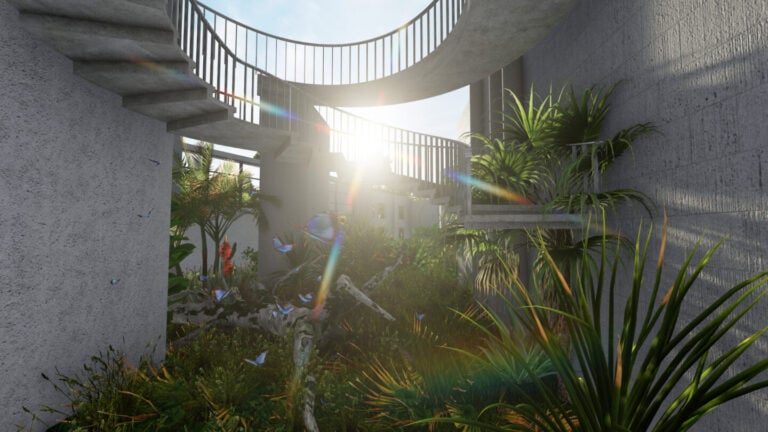
Terrário
Gabriel Junqueira
Commissioned for issue #4 of Pivô Satélite, Terrário is a work by Gabriel Junqueira, created using 3D architectural modeling software to recreate the spaces of Copan and Pivô. The work…
- favorite
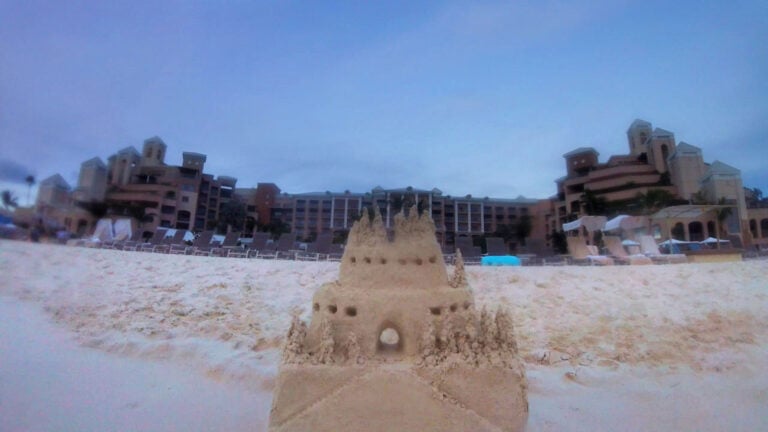
Ronquidos Oceánicos II - Insomnia
Emilio Bianchic & Florencia Giles
Commissioned for issue #6 of Satélite, Ronquidos Oceânicos II – Insomnia continues the research project begun in 2017 by artists Florencia Giles and Emilio Bianchic, which investigates underwater environments and…
- 13:05
- favorite
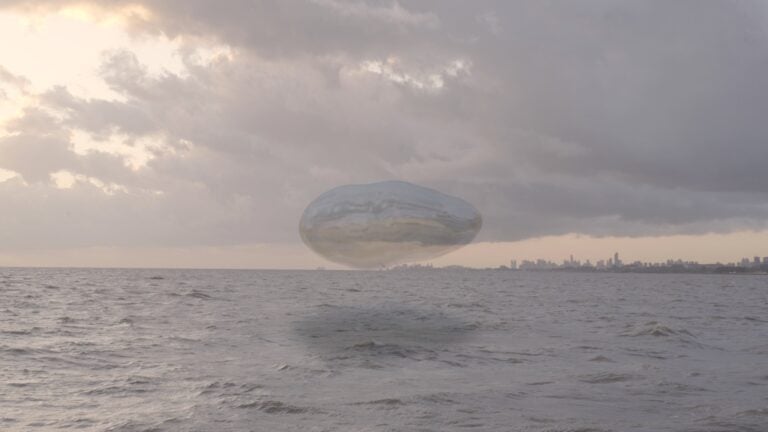
Corrientes Mercuriales
Carolina Fusilier
Corrientes Mercuriales originates from research conducted by artist Carolina Fusilier, motivated by her search for a photograph of her father taken in 1996, during the successive financial crises that marked…
- 19:30
- favorite

In View
Randa Maddah, 2017
- 07:07
- 2017
- favorite

ONE MILLION (Japanese Yen)
Kwan Sheung Chi, 2012
- 01:08
- 2012
- favorite
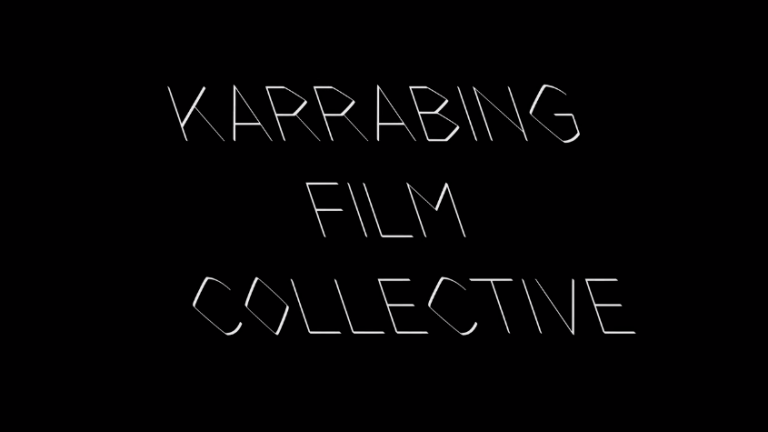
Karrabing Film Collective
- favorite



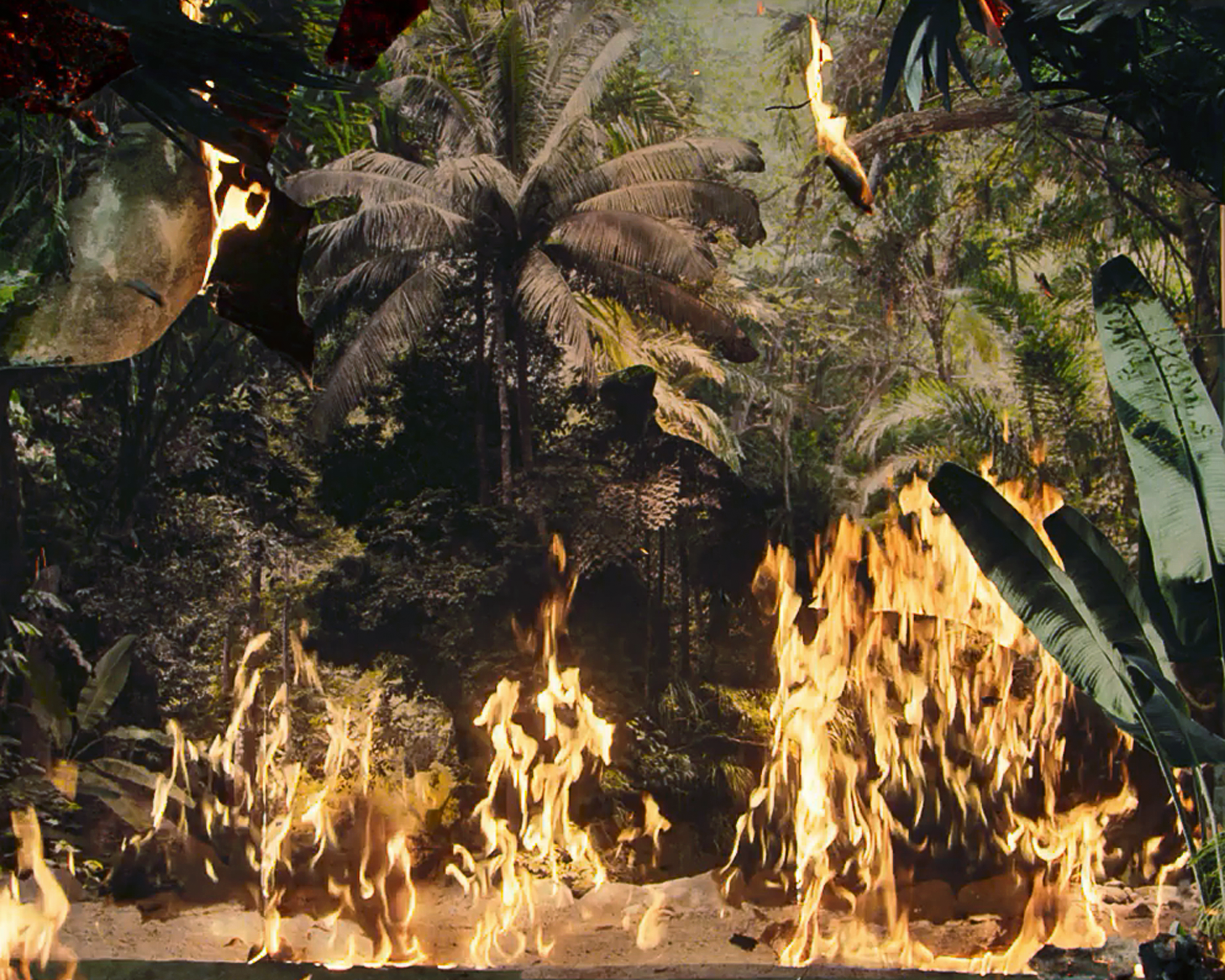

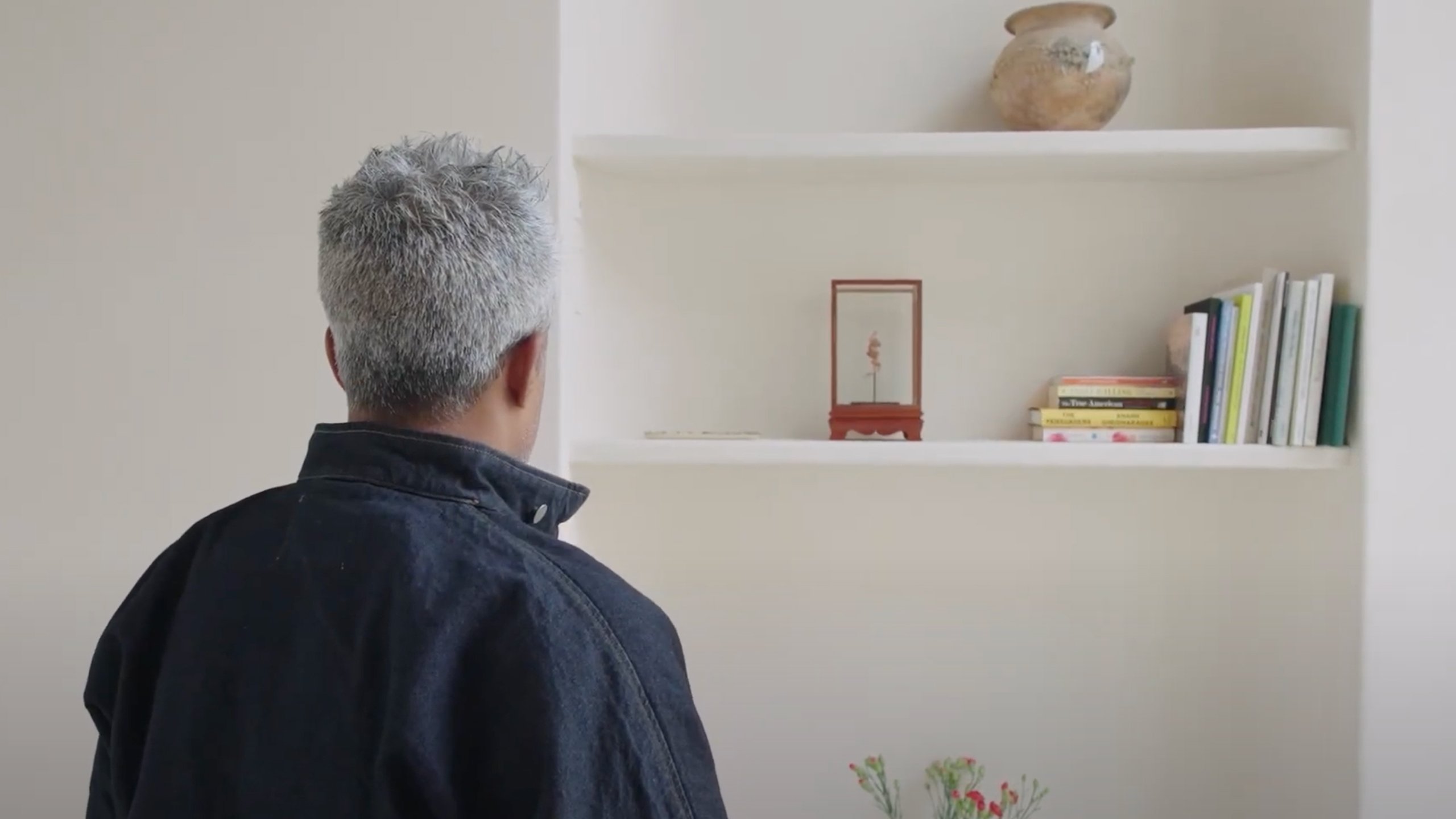
![Ana María Millán - Elevación [Elevation]](https://kadist.org/wp-content/uploads/2022/09/IMG_escena001_3513-scaled.jpg)










